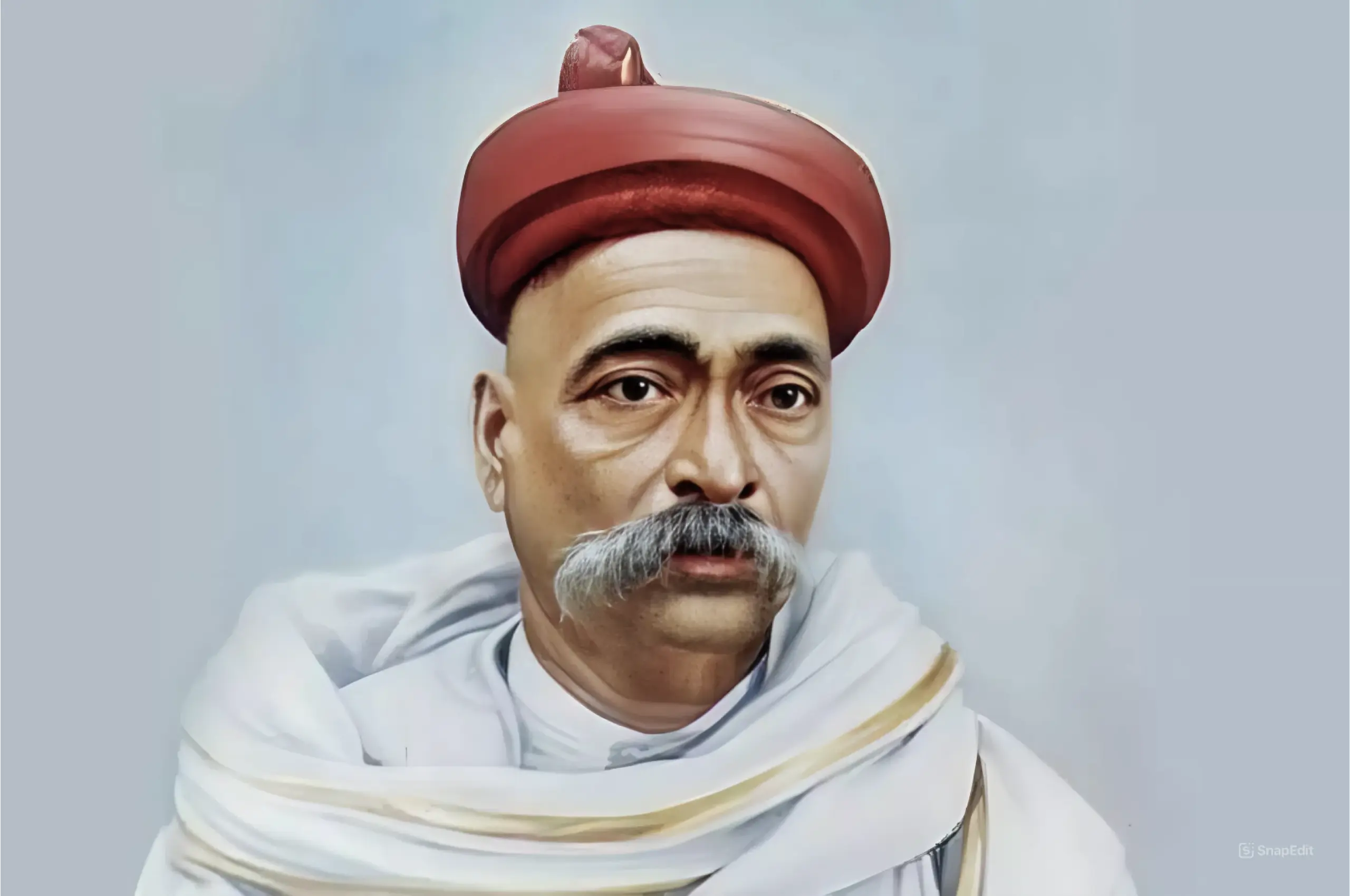
“Swaraj is my birthright, and I shall have it” — Bal Gangadhar Tilak
From his early years of struggle and education to his pivotal role in shaping India’s destiny towards “Swaraj,” Bal Gangadhar’s legacy continues to inspire generations. He was a man of indomitable spirit who defied the British Raj, leaving an indelible mark on India’s fight for Independence. We present to you a saga in brief, showcasing the remarkable journey of this extraordinary leader!
The Early Years — A Rising Star (1856–1879)
In the quaint town of Ratnagiri, a young boy named Bal Gangadhar Tilak was born on 23rd July 1856. From humble beginnings, he embarked on a journey of learning, guided by his father’s wisdom and love for education. Tilak’s brilliance shone through as he solved challenging Arithmetic problems at a tender age, setting the stage for his future accomplishments.
However, fate had its share of sorrows, as he lost his mother to ill health, a heartbreak that shaped his resilience and determination. As he progressed in his studies, destiny brought him love and marriage, but tragedy struck again with the untimely demise of his father, leaving him an orphan. Undeterred, Bal Gangadhar Tilak continued his education, graduating from the prestigious Poona High School and later obtaining an L.L.B. degree, setting the foundation for his journey ahead.
Empowering the Masses — The Education Crusader (1880–1894)
Tilak’s dedication to social activism emerged in 1880 when he founded the New English School, Poona. Here, he sowed the seeds of knowledge and ignited the flame of cultural nationalism. Through the Arya Bhushan Press, he propagated the importance of indigenous education, harnessing the influence of “Kesari” and “Mahratta” to spread the message.
As Tilak’s influence grew, he faced trials and tribulations, including imprisonment due to his fiery writings. Undeterred, he pressed forward, establishing the Deccan Education Society and Fergusson College, institutions that shaped the minds of countless young Indians. With a keen interest in the Vedic Hindu Civilization, Tilak’s scholarly contributions like “The Orion” paved the way for deeper reflections on India’s cultural heritage.
Navigating the Realm of Nationalism (1895–1914)
Tilak’s political journey reached its zenith as he became a prominent member of the Indian National Congress. Tilak’s opposition to the moderate stance of Gopal Krishna Gokhale found a strong resonance among other Indian nationalists like Bipin Chandra Pal in Bengal and Lala Lajpat Rai in Punjab. United in their nationalist fervour, they came to be known as the “Lal-Bal-Pal triumvirate,” representing a powerful force within the freedom movement.
His provocative articles in newspapers like “Kesari” and “Mahratta” stoked the flames of rebellion against British oppression, leading to his imprisonment in Mandalay Jail. His mantra “Swaraj is my birthright and I shall have it” echoed through the hearts of millions.
During his imprisonment in Mandalay, Tilak’s intellectual prowess remained undiminished. He composed the “Gita Rahasya,” an inspiring philosophical treatise that conveyed the essence of the Bhagavad Gita along with his profound interpretations of life. Despite the hardships of prison life, Tilak’s dedication to his philosophical and nationalist ideals shone through in his prolific writings.
Visionary Leader — The Dream for Home Rule (1914–1920)
Following his release from the Mandalay Jail, Tilak joined forces with Annie Besant in the Home Rule Movement. Together, they embarked on a nationwide journey, kindling the fire of freedom in every corner of India. His strategic roadmap for achieving “Home Rule” united people under a common purpose. Celebrations like “Shivaji Jayanti” and “Ganesh Pooja” served as platforms to promote political consciousness and solidarity. Tilak’s speeches resonated with the masses, electrifying the nation with the dream of a free India!
The End of an Era and the Everlasting Legacy
On 1st August 1920, India bid farewell to Bal Gangadhar Tilak, the valiant son of the soil. Mahatma Gandhi himself recognized Tilak’s unmatched hold on the masses, leaving behind an enduring legacy that inspired future generations of freedom fighters. The Indian National Movement continued to thrive, carrying forward the torch that Tilak had ignited.
On 28 July 1956, a dignified portrait of Bal Gangadhar Tilak found its rightful place in the esteemed Central Hall of Parliament House. The splendid artwork capturing Tilak’s essence was skillfully rendered by the talented painter Gopal Deuskar. The unveiling of this portrait was a momentous occasion, graced by none other than the Prime Minister of India at the time, Jawaharlal Nehru.
Tilak Smarak Ranga Mandir, an illustrious theatre auditorium in Pune, stands as a tribute to his memory and contributions. In 2007, the Government of India honoured Bal Gangadhar Tilak’s 150th birth anniversary by issuing a commemorative coin in his honour.
Numerous Indian films have been crafted to portray his life, including renowned documentaries such as Lokmanya Bal Gangadhar Tilak (1951) and Lokmanya Tilak (1957). Additionally, the cinematic masterpiece Lokmanya: Ek Yugpurush (2015), and The Great Freedom Fighter Lokmanya Bal Gangadhar Tilak — Swaraj My Birthright (2018), have further brought his inspiring journey to the silver screen.
Join us as we celebrate the life of this extraordinary visionary today, whose unyielding spirit and passion for Swaraj continue to echo through the annals of Indian history!
Similar to the legacy of Bal Gangadhar Tilak, we too possess our own exceptional stories, longing to be shared. Regrettably, we often overlook the importance of documenting it, allowing our legacy to fade away with time. Mitt Arv is now here to ensure that your legacy thrives and leaves an indelible mark on your future generations!